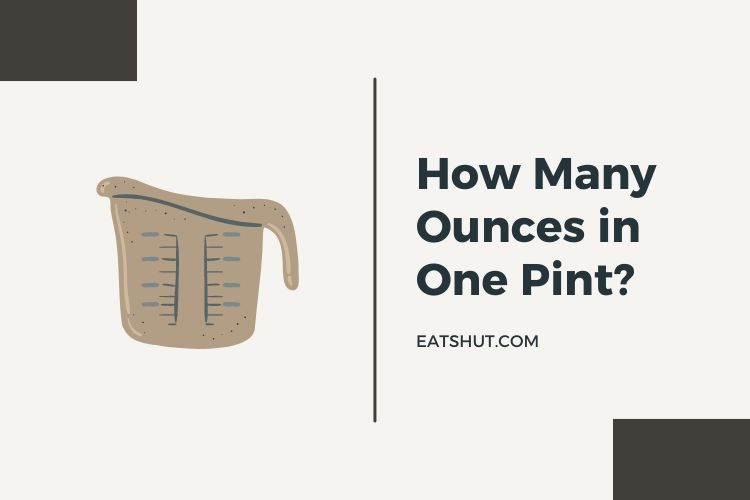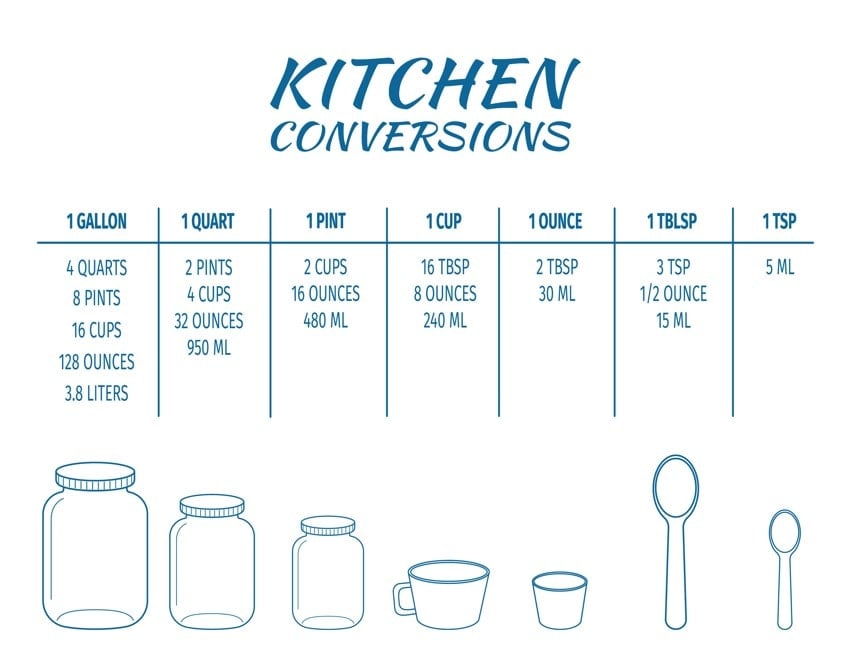How Many Ounces Are In One Pint? The Ultimate Guide You’ve Been Searching For
Let’s cut to the chase, folks—how many ounces are in one pint? If you’ve ever found yourself scratching your head in the kitchen or at a bar wondering about this conversion, you’re definitely not alone. Whether you’re whipping up a recipe, pouring a drink, or just trying to sound smart around friends, understanding measurements is key. And trust me, this isn’t rocket science—but it’s still worth knowing. So, buckle up, because we’re diving deep into pints, ounces, and everything in between!
Now, I know what you’re thinking: “Why does this matter?” Well, here’s the deal. Measurements aren’t just for scientists or chefs; they’re part of everyday life. From cooking to drinking, knowing how many ounces are in a pint can save you from a lot of headaches—or worse, ruined dishes. Plus, let’s face it, it’s always cool to drop some knowledge when the situation calls for it.
In this article, we’ll break it all down for you. We’ll cover everything from the basics of pints and ounces to some fun facts and handy tips. By the time you’re done reading, you’ll be a pint-and-ounce pro. So, grab your favorite drink (or maybe a pint?) and let’s get started!
- Gm Financial Account A Comprehensive Guide To Managing Your Auto Financing Needs
- George Hamilton The Legendary Man With A Charismatic Legacy
Table of Contents
- What Is a Pint?
- How Many Ounces Are in a Pint?
- Types of Pints Around the World
- Easy Conversion Tips
- Common Questions About Pints
- Why Should You Know This?
- The History of the Pint
- Practical Uses of Pint Measurements
- Fun Facts About Pints
- Final Thoughts
What Is a Pint?
Alright, let’s start with the basics. A pint is a unit of measurement commonly used for liquid volumes, but it can also apply to dry goods in some cases. It’s one of those terms you hear all the time, whether you’re grabbing a beer at your local pub or following a recipe in the kitchen. But what exactly is a pint, and why do we use it?
Historically, the pint has been around for centuries, with its origins tracing back to medieval Europe. Back then, it was used as a standard measure for ale and beer, and it’s stuck around ever since. Today, the pint is widely recognized across the globe, though its exact size can vary depending on where you are. We’ll dive deeper into that later, but for now, just know that a pint is a pretty big deal when it comes to measurements.
Why Do We Use Pints?
There’s something comforting about using familiar units of measurement, and the pint fits that bill perfectly. Whether you’re measuring out milk, juice, or even water, the pint is a reliable go-to. Plus, it’s easy to visualize—a pint is roughly the size of a standard glass of beer, which makes it super convenient for everyday use.
- Cmu Sio The Ultimate Guide To Carnegie Mellons Software Engineering Masterpiece
- Who Really Owns General Motors A Deep Dive Into The Gm Ownership Structure
How Many Ounces Are in a Pint?
Here’s the million-dollar question: how many ounces are in one pint? Drumroll, please… In the United States, one pint equals 16 fluid ounces. Simple, right? But hold on a sec—things get a little more complicated when you start talking about other countries. For instance, in the UK, a pint is actually larger, clocking in at 20 fluid ounces. Yikes! So, it’s important to know where you are and what kind of pint you’re dealing with.
Let’s break it down further. If you’re working with recipes or drinks, knowing this conversion is crucial. Imagine pouring a pint of soda and realizing you’ve overpoured because you didn’t know the difference between US and UK pints. Not exactly ideal, right? That’s why having a solid understanding of these measurements is so important.
Breaking It Down: US vs. UK Pints
- US Pint: 16 fluid ounces
- UK Pint: 20 fluid ounces
See the difference? It’s not huge, but it’s definitely something to keep in mind, especially if you’re traveling or working with international recipes.
Types of Pints Around the World
As I mentioned earlier, the size of a pint can vary depending on where you are. While the US and UK have their own standards, other countries have their own takes on the pint as well. Let’s take a quick tour around the globe and see how the pint changes from place to place.
US Pint
In the United States, a pint is defined as 16 fluid ounces, which is equivalent to about 473 milliliters. This is the standard you’ll find in most recipes and beverages in the US, so it’s the one you’ll likely encounter most often.
UK Pint
Over in the UK, a pint is a bit bigger, coming in at 20 fluid ounces or approximately 568 milliliters. This larger size is one reason why British pints feel so satisfying—there’s just more drink in there!
Australian and Canadian Pints
Both Australia and Canada have their own versions of the pint, which align more closely with the UK standard. In Australia, a pint is about 570 milliliters, while in Canada, it’s slightly smaller at around 568 milliliters. These variations might seem small, but they can add up over time.
Easy Conversion Tips
Now that we’ve covered the basics, let’s talk about some practical tips for converting pints to ounces (and vice versa). Whether you’re cooking, drinking, or just trying to impress your friends, these tricks will come in handy.
Quick Conversion Formula
Here’s a simple formula you can use:
- To convert pints to ounces: Multiply the number of pints by 16 (for US pints).
- To convert ounces to pints: Divide the number of ounces by 16.
For UK pints, just adjust the formula to use 20 instead of 16. Easy peasy, right?
Use a Measuring Cup
If math isn’t your strong suit, don’t worry—you can always rely on a good old-fashioned measuring cup. Most measuring cups have both pint and ounce markings, so you can simply pour and measure without doing any calculations.
Common Questions About Pints
Let’s address some of the most frequently asked questions about pints and ounces. These are the kinds of questions that pop up all the time, so it’s good to have answers ready.
Is a Pint Always 16 Ounces?
Not necessarily. As we’ve discussed, the size of a pint can vary depending on where you are. In the US, a pint is 16 ounces, but in the UK and other countries, it’s larger.
Can I Use a Pint for Dry Measurements?
Technically, yes, but it’s not always recommended. Pints are primarily designed for liquid measurements, so using them for dry goods can lead to inaccuracies. If you’re measuring something like flour or sugar, it’s better to use a dedicated dry measuring cup.
Why Should You Know This?
Knowing how many ounces are in a pint might seem like a trivial piece of information, but it’s actually pretty important. Here’s why:
- Cooking: Recipes often call for specific measurements, and getting them wrong can ruin your dish.
- Drinking: Whether you’re serving drinks at a party or just enjoying a night out, understanding pint sizes can help you avoid overpouring or underpouring.
- Traveling: If you’re traveling abroad, knowing the local pint size can prevent confusion and ensure you’re getting what you expect.
Plus, let’s be honest—it’s always good to have a bit of knowledge up your sleeve. You never know when it might come in handy!
The History of the Pint
Let’s take a quick trip back in time to explore the fascinating history of the pint. As I mentioned earlier, the pint has been around for centuries, with its origins dating back to medieval Europe. Back then, it was primarily used as a standard measure for ale and beer, and it quickly became a staple in pubs and taverns across the continent.
Over time, the pint evolved and spread to other parts of the world, adapting to local customs and standards. Today, it’s a universally recognized unit of measurement, though its exact size may vary depending on where you are. Despite these differences, the pint remains a beloved and trusted tool for measuring liquids of all kinds.
Practical Uses of Pint Measurements
So, how can you apply your newfound knowledge of pints and ounces in everyday life? Here are a few practical examples:
- Cooking: Use pints to measure out liquids like milk, broth, or oil when following a recipe.
- Drinking: Pour the perfect pint of beer or soda using a measuring cup or pitcher.
- Gardening: Measure water for your plants in pints to ensure they’re getting the right amount.
See? The pint isn’t just for beer lovers—it’s a versatile tool that can be used in a variety of situations.
Fun Facts About Pints
Before we wrap up, let’s have a little fun with some interesting facts about pints:
- The word “pint” comes from the Latin word “pincta,” which referred to a mark on a container indicating its capacity.
- In medieval England, alewives (female brewers) were required to use standardized pints to ensure fair trade.
- Pints are often associated with beer, but they can be used to measure any liquid, from milk to juice to water.
Who knew the humble pint had such a rich and fascinating history?
Final Thoughts
And there you have it—the ultimate guide to pints and ounces. By now, you should have a solid understanding of how many ounces are in one pint, the differences between US and UK pints, and why this knowledge matters. Whether you’re cooking, drinking, or just trying to impress your friends, knowing your pints and ounces can come in handy in more ways than you might think.
So, what’s next? Why not share this article with a friend or leave a comment below with your thoughts? And if you’re feeling adventurous, try out some of the practical tips we’ve discussed. Who knows—you might just discover a new favorite recipe or cocktail in the process!
Thanks for reading, and remember: knowledge is power. Now go forth and measure with confidence!



Detail Author:
- Name : Carmella Fay
- Username : gbergnaum
- Email : mylene.denesik@koelpin.com
- Birthdate : 2003-09-15
- Address : 402 Ima Tunnel Dorashire, MD 11398-5582
- Phone : (207) 484-4883
- Company : Bins-Hartmann
- Job : Oil Service Unit Operator
- Bio : Et qui inventore harum. Aperiam occaecati inventore voluptas et officia delectus tenetur. Officia voluptatum vel perferendis dolore beatae quas ipsa.
Socials
linkedin:
- url : https://linkedin.com/in/estebanmueller
- username : estebanmueller
- bio : Minus et porro nulla et.
- followers : 328
- following : 940
twitter:
- url : https://twitter.com/emueller
- username : emueller
- bio : Et enim mollitia inventore neque. Dolorum reprehenderit qui voluptas enim est. Enim doloribus consequatur libero inventore eum ut.
- followers : 4317
- following : 1269
facebook:
- url : https://facebook.com/emueller
- username : emueller
- bio : Eaque sit exercitationem perspiciatis veritatis consequatur.
- followers : 2047
- following : 1064
tiktok:
- url : https://tiktok.com/@estebanmueller
- username : estebanmueller
- bio : Pariatur possimus similique distinctio in.
- followers : 4141
- following : 2239
instagram:
- url : https://instagram.com/estebanmueller
- username : estebanmueller
- bio : Ut ex quo delectus. Debitis maxime id ut optio dolores. Aut consectetur tenetur at sapiente.
- followers : 2829
- following : 605